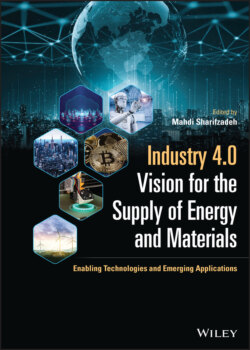Читать книгу Industry 4.0 Vision for the Supply of Energy and Materials - Группа авторов - Страница 46
1.5.1.3 MTC Trade-Off for Different Cellular Generations
ОглавлениеVarious smart devices are constantly released into IIoT market, and it is difficult to integrate all these parts through communication systems. An important aspect of MTC is to connect devices regardless of type of their cellular and mobile networks, business industries, or machine types. This section briefly reviews different cellular technologies and their trade-offs for MTC deployments.
The 2G family (GSM, GPRS, and EGPRS) is ideal for M2M communication as its power consumption and cost is low. In addition, M2M transmission requires very few bytes that could be effectively handled by 2G. Compared with newer generations, 2G is not spectrum efficient; therefore, its data rate and device management communication are less efficient for the same wireless bandwidth. Furthermore, spectrum sharing is not a viable option for 2G.
The 3G family (UMTS and HSPA) supports the data rate of 1–3 Mbps that exceeds the requirements of most M2M applications. For automotive M2M applications that need a broad range of data rates, 3G is an appropriate wireless network. Compared with 2G, devices, network equipment, and connectivity are more expensive and less power efficient.
4G technologies (LTE and LTE-A) have an “all IP” technology that makes network infrastructure deployments simpler and less expensive than older cellular networks. It offers improved spectral efficiency, greater longevity, bandwidth flexibility, and scalability, all of which meet the requirements for MTC applications. To cope with the increased complexity of the protocols in 4G, high-performance processors in the radios are required. This leads to higher cost in 4G and makes large-scale M2M deployments difficult.
5G technology supports the requirements of MTC design as the forefront of IoT by offering lower cost, better power efficiency, and increased data rate for both terminals and systems. It also offers minimum latency for delay sensitive applications, massive MTC access, and seamless integration of IoT devices, all without QoS deterioration [143]. A number of 5G features also fit well with the M2M path, namely, service creation, service provisioning, and dense deployments.
